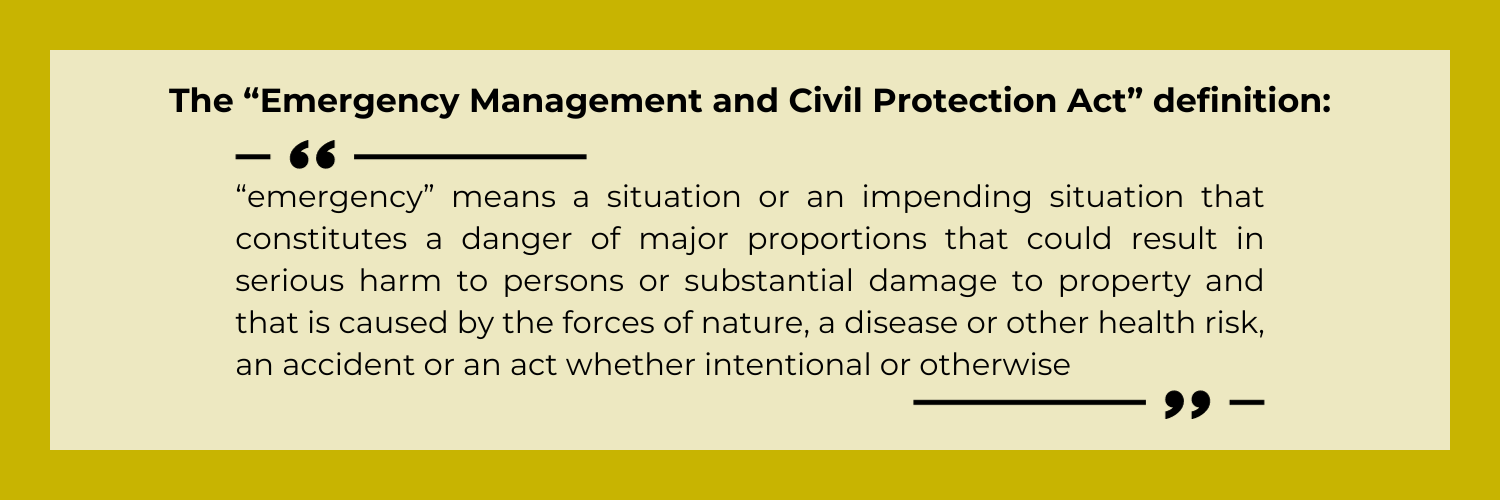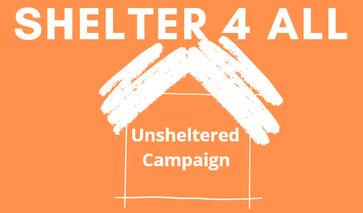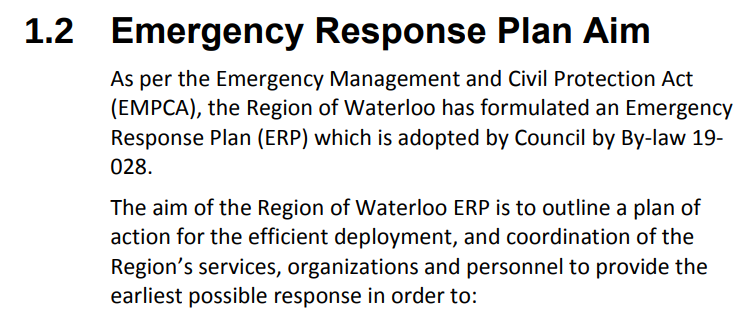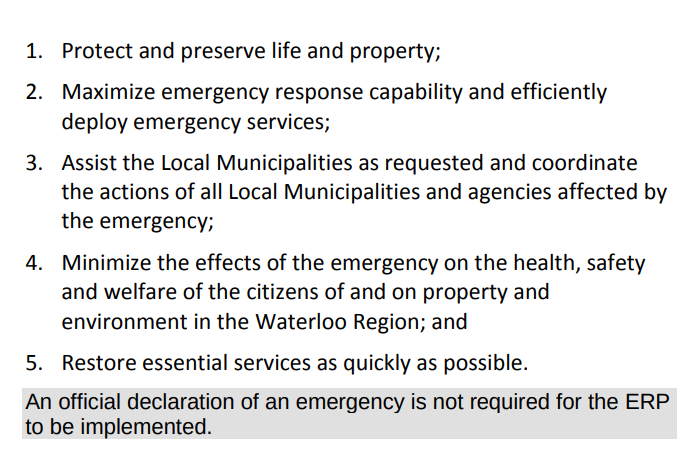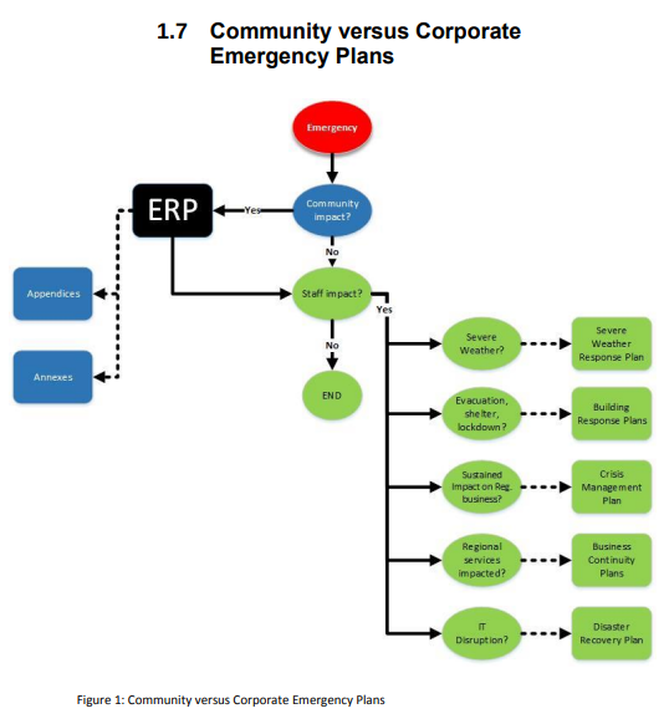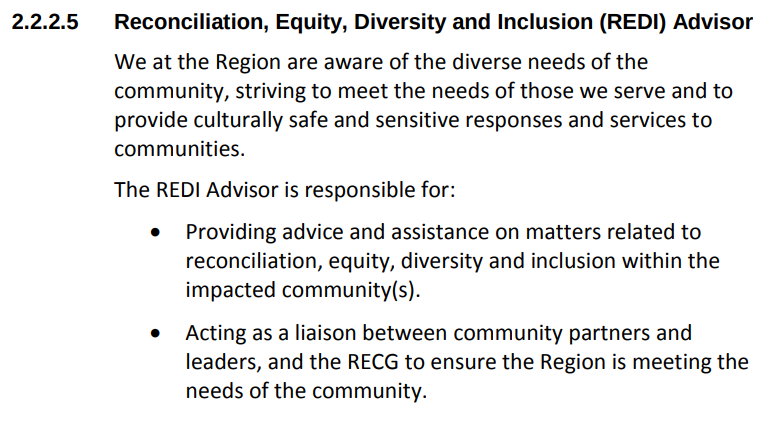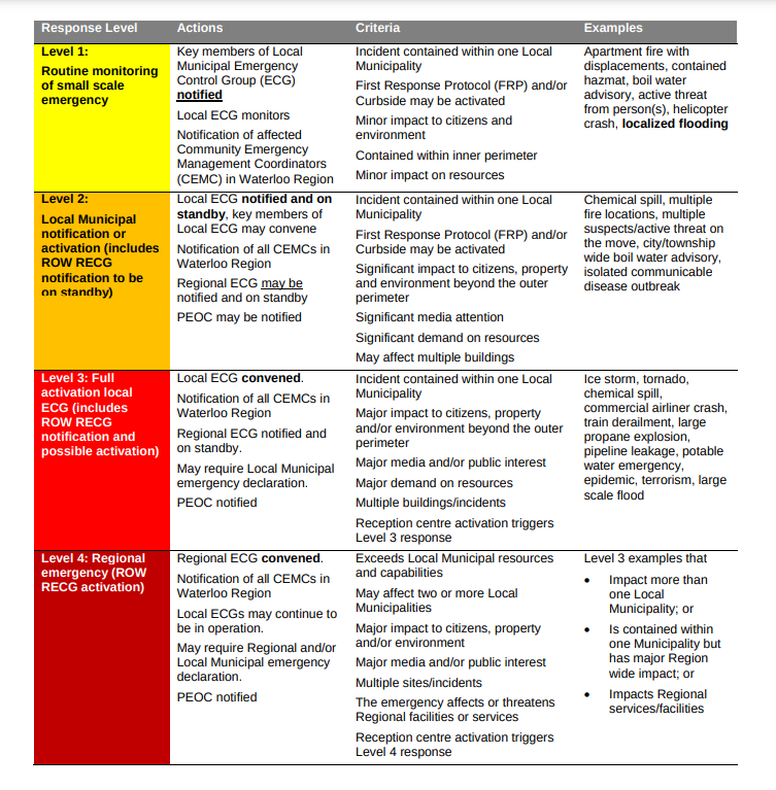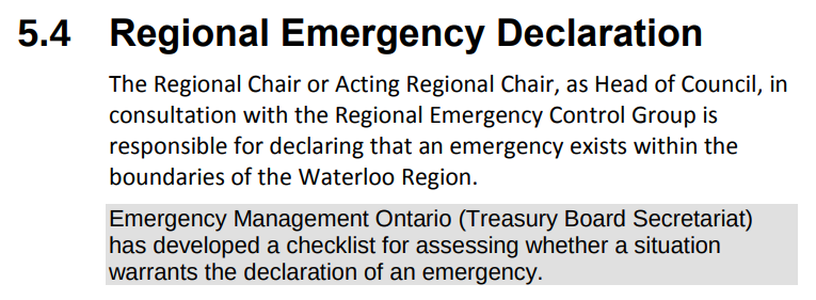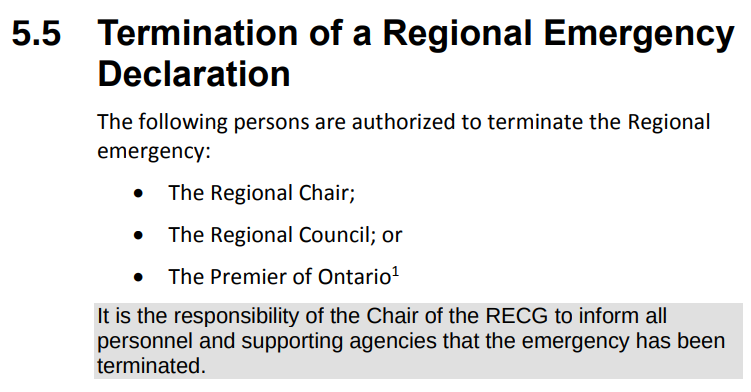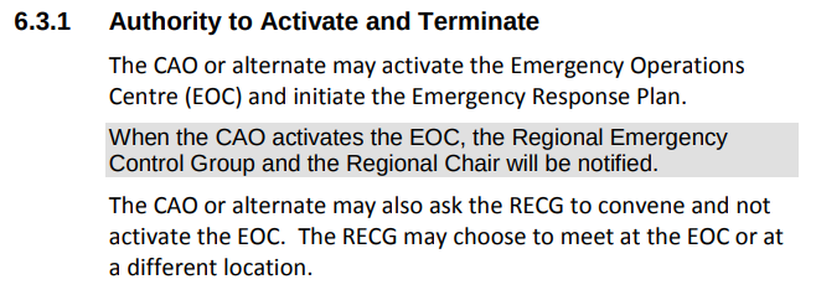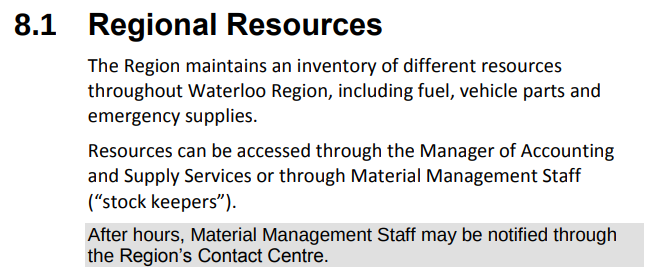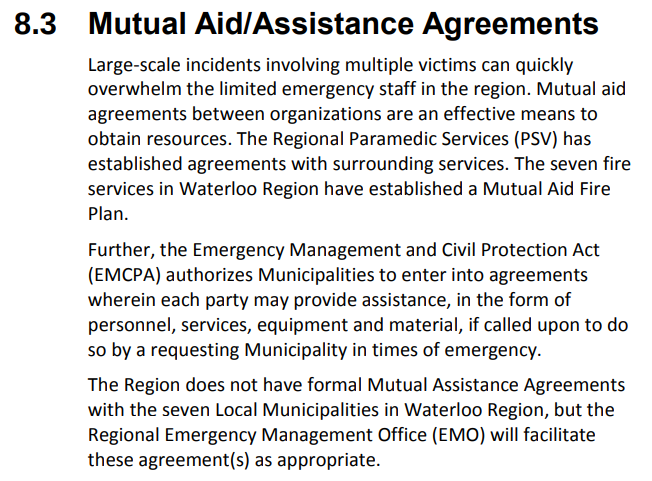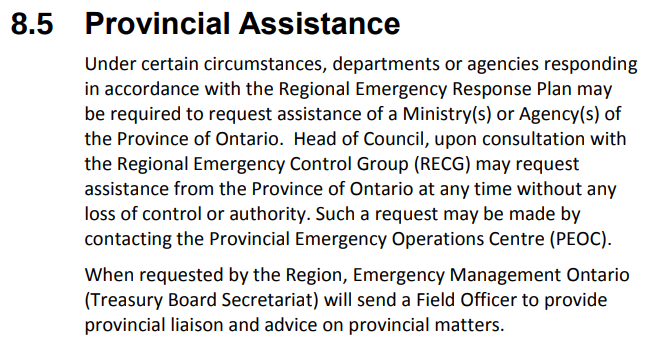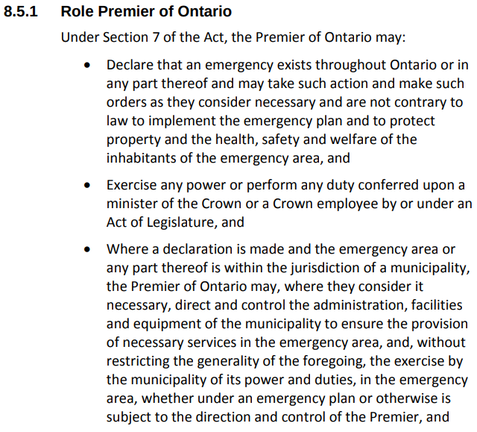Emergency or Public Health Crisis?
|
Affordable Housing Initiatives Funding
(Proposed to City of Kitchener Council January 13th, 2020) Emergency?Provincial Act Region of Waterloo
Regional Municipality of Waterloo Administration and Finance Committee - Tuesday, August 15, 2023 (video and info below)
|
Information ResourcesRegion of Waterloo links:
Ontario (.ca)
Other
|
|
1.2 - Emergency Response Plan Aim
Above image source: DOCS #2026689 (Page 7) - Region of Waterloo
1.4.3 - Conflict with lower tier plans
1.7 - Figure 1: Community vs. Corporate Emergency Plans
2.2.2.5 - Reconciliation, Equity, Diversity and Inclusion (REDI) Advisor
5.2 ESCALATION OF EMERGENCIES IN WATERLOO REGION
(Below image/chart and written content sourced from Appendix C - Schedule A -Emergency Response Plan - Public Version 2023 (page 23-24) on 17/11/23)
Each Municipality within the Waterloo Region has agreed to use the following four emergency management response levels as a guide for before, during and following emergencies. Each level signifies the variation of the impact to the community caused by the major incident or emergency. 5.4 Regional Emergency Declaration
5.5 Termination of a Regional Emergency Declaration
6.3.1 Authority to Activate and Terminate
Related
|
Public Health Crisis?
|
|
